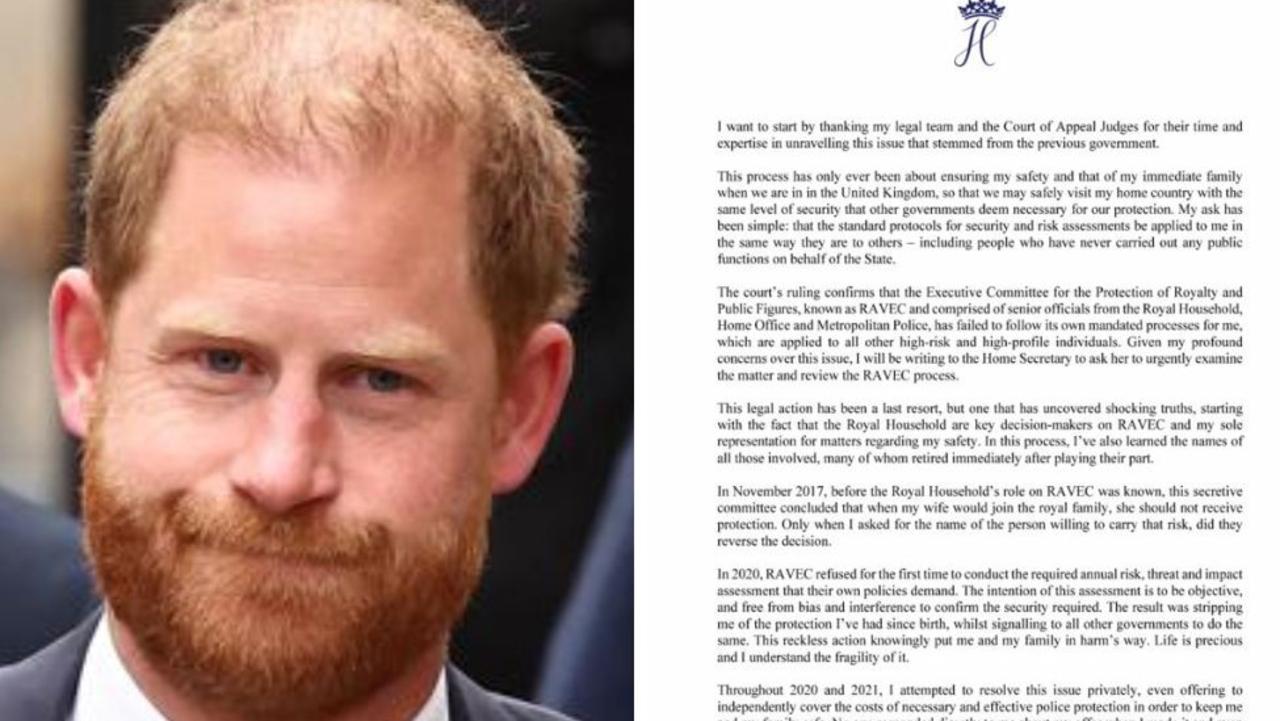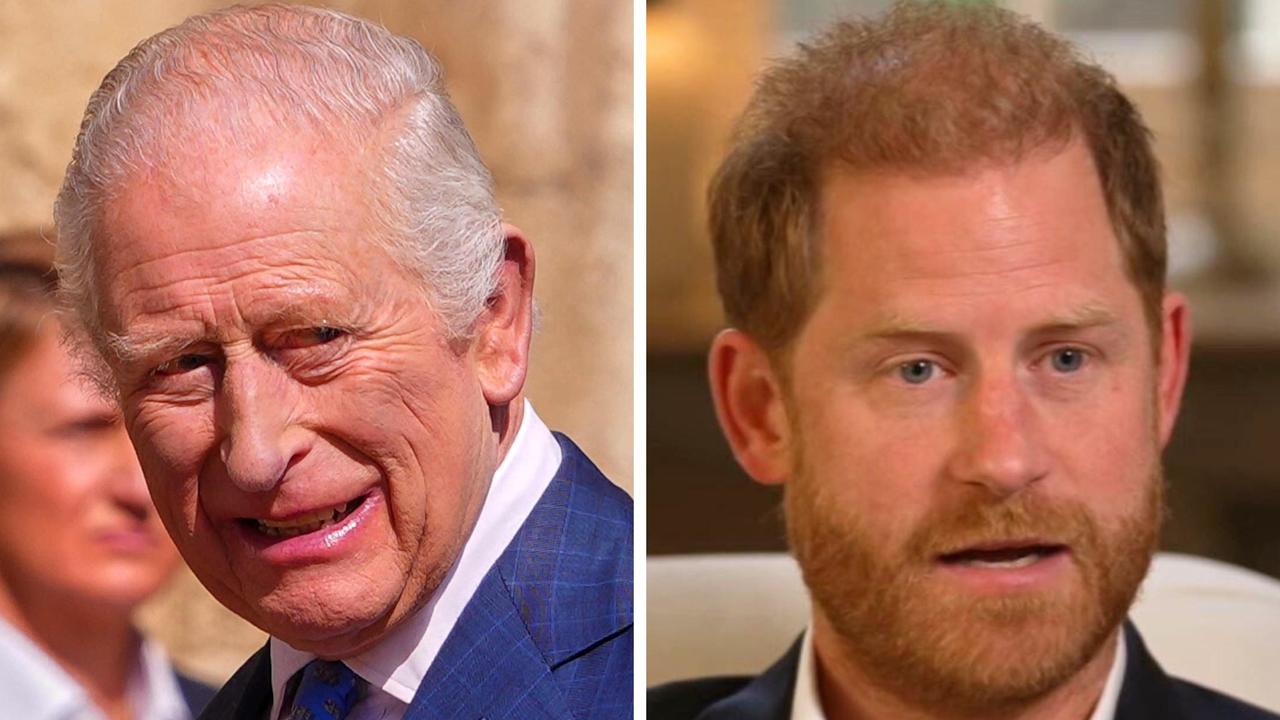Tragic story behind Princess Diana and Prince Charles yacht photos
Freshly released photos from the set of The Crown paint the tragic story behind Princess Diana’s ongoing battles at that time.

Royals
Don't miss out on the headlines from Royals. Followed categories will be added to My News.
COMMENT
In the sad way of the eternally sad tale of Diana, Princess of Wales the world is about to pass another sad milestone. Later this month, on October 23, it will be exactly 30 years since one of the most famous photos of the royal was taken on board the deck of the royal yacht Brtiannai.
The story goes like this. The princess and husband Prince Charles were in Canada for a tour and on the second day, in Toronto, they were to be reunited on board with their sons Prince William and Prince Harry. The couple’s limousine pulled up next to the boat and the then 30-year-old bounded out before breaking into a run to jubilantly hug her sons.
The shots of the princess beaming, cheeks flushed, her sons’ joy heart meltingly apparent made for potent stuff. They cemented her image as the warm, deeply human half of the Wales marriage, Charles by contrast, cast firmly in the role of cold-blooded, emotionally barren Hanoverian holdover.
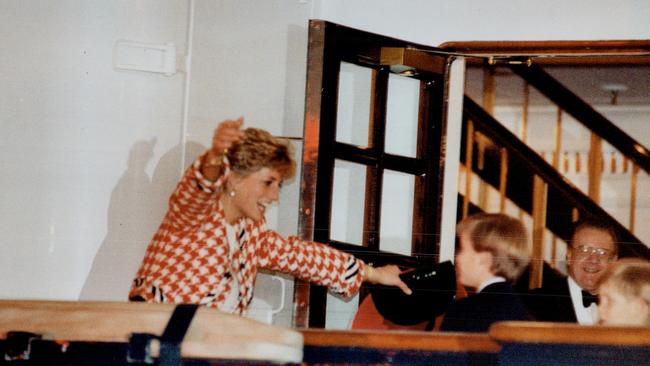
Those now iconic photos were a PR coup de grace for a woman who was by this stage locked in a war with her husband’s camp, a war that only a select handful in the press fully understood the full extent of.
And they also weren’t the whole story.
While it would be a year before Andrew Morton’s dynamite Diana: Her True Story would rock the palace and a year before they would finally separate, 1991 was a year that marked a turning point in the sour story of the Wales’.
That very specific period in royal history is back in the news this week thanks to newly published images of the cast shooting the fifth season of Netflix’s The Crown, recreating this stormy chapter in Windsor history.

Elizabeth Debiciki, looking startlingly like Diana, and Dominic West doing his jug-eared best as Charles, are currently filming the next series of the palace epic (which plays fast and loose with pesky notions of truth) in Majorca, with the Spanish island a stand-in for Naples where the prince and princess, and their young sons, holidayed in August 1991.
It’s a period in the sordid story of Charles and Diana that is often seen as fallow ground, with writers skittering from the events of 1989 (Diana confronting her bete noire Camilla; her famous trip to New York) to the convulsions of 1992 when the charade of their marriage finally crumbled.
But what gets overlooked is that 1991 was the year when things changed seismically for not only Diana and Charles but the Queen and The Firm as a whole, laying the foundation of the final tragic chapter.
So, let’s imagine it’s New Year’s Day, 1991. For the prince and princess, their marriage was on life support. Amongst Charles’ aristocratic set, his affair with Camilla saw them viewed as a couple by their friends with the still-married mother-of-two playing hostess at Charles country house Highgrove when they entertained their mutual friends.
(The irony here being that there is no consensus amongst biographers quite which half of the royal couple strayed first, with some arguing it was the princess who strayed first. We know that it was in 1986 that Diana and Hewitt began their affair but the question that has never been satisfactorily answered is at what point Charles’ devotion to Camilla tipped from the emotionally unfaithful to also the physical.)
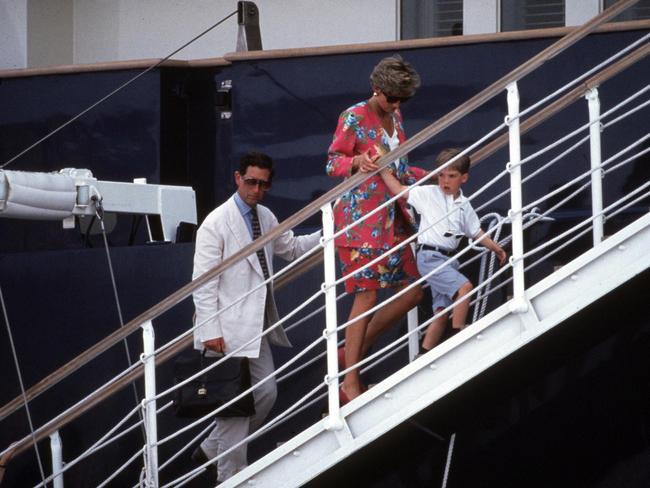
So, it’s 1991 and Diana and Hewitt’s dalliance has been going on for nearly five years when news of their affair breaks out into the open when first in February, society columnist Nigel Dempster outed Hewitt as a friend of Diana.
Then, the next month, Hewitt’s ex-girlfriend told all to the News of the World, revealing that the royal had been sending the Army officer expensive gifts to the Gulf where he was stationed. (When he later returned to the UK, Diana cut him off, not answering his calls.)
Elsewhere, the civil war was only heating up. Come April and Charles and Diana went off to Brazil for an official tour. Royal biographer Tina Brown writes that on the plane on the way there, “the Princess lightly referred to the briefings she was reading as her ‘homework’. Charles promptly cut her down with, ‘Oh, she doesn’t know a thing about Brazil.’”
He might have been willing to readily dismiss his wife but it’s hard in hindsight not to wonder how much such a comment as this might have been driven by jealousy. In the late ‘80s and the beginning of the new decade, Diana had started to take on grittier and more pressing charitable interests, notably HIV/AIDS.
Her taboo-busting visits to hospices helped shift the stigma around the disease and she played a central role in changing the national conversation on the topic. In the face of this progressiveness and deeply human approach, Charles looked increasingly wanting.
What the Prince of Wales, or even Buckingham Palace, seems to have not realised however in 1991 is that his wife was at breaking point.
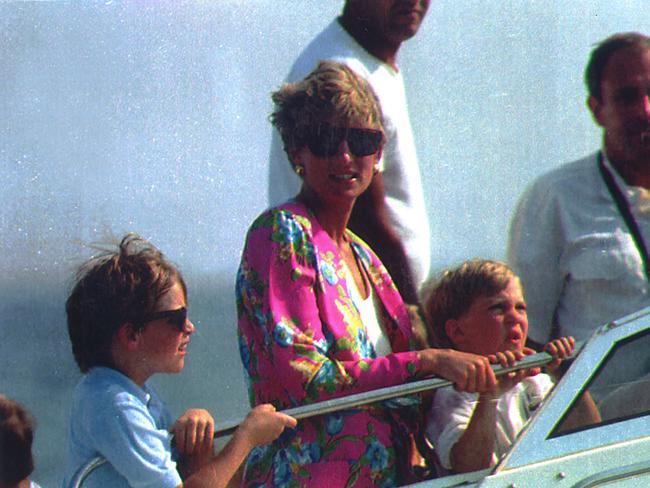
One morning in May, the arrival of the Princess of Wales’ lifelong friend James Colthurst at the gates of Kensington Palace marked the beginning of one of the most damaging chapters in royal history. Carrying a tape recorder, Colthurst had agreed to act as a go-between for her and Andrew Morton, with Diana recording answers to the journalist’s questions with Colthurst delivering the tapes.
As Brown tells it, “Whenever Diana heard a knock on the door of her private sitting room as they talked, she hid the mike among the plump sofa cushions.”
“The first tape was just like – I can’t emphasise it strongly enough – just like the desperate confessional, wanting to get everything out, it was ten years of her betrayal and unhappiness, depression and ridicule … And it just came flowing out in a huge torrent,” Morton later told biographer Sarah Bradford.
“I think she wanted people to know what life was really like for her. I used the phrase ‘the prisoner in the Palace’ and all that kind of thing. She felt constrained by the environment in which she worked. She felt there was no out, she felt disempowered both as a woman and as a human being. She felt trapped, not just in her marriage but by the system.”
For six months, this covert operation would continue right under courtiers’ noses. They would be none the wiser until the IED that was Diana: Her True Story dropped the following year.
Come June, and again Diana found herself basking in the glow of an adoring press while Charles was cast as a stiff anachronism. While at Ludgrove House, his prep school, a young William had been hit on the head by a golf club and was taken to hospital in London. He would need surgery but it was all pretty straightforward and the prince decided to stick to his commitment to host British and European officials at the opera.
The press had a field day. ‘WHAT SORT OF A DAD ARE YOU?’ thundered the Daily Mirror. ‘A PHANTOM FATHER’, wrote the Daily Express.
And Diana? ‘THE EXHAUSTED FACE OF A LOVING MOTHER’ as another paper phrased it.
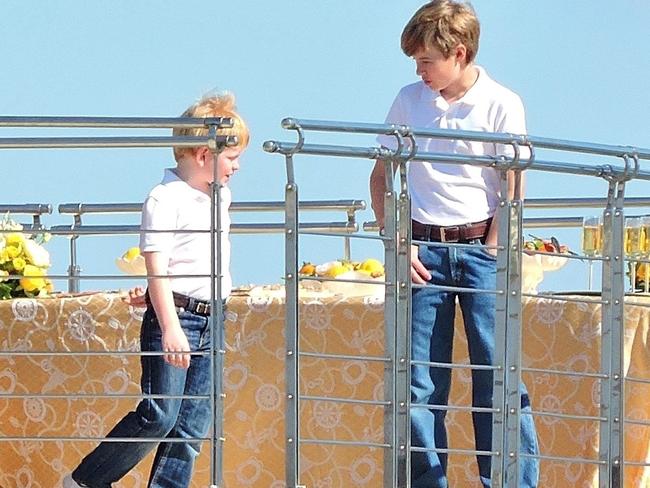
As the year ticked on, the battle between the Wales’ factions broke into full, ugly view in July as Diana approached her 30th birthday. In the lead up, Morton, writing in the Sunday Times, revealed that she would be spending the milestone day on her own in London.
Team Charles hit back, letting it be known he’d offered to throw his wife a party but she had turned him down with an unnamed friend telling the Daily Mail, “This is the latest example whereby the Prince of Wales is being made to look bad through no fault of his own.”
As her longtime private secretary Patrick Jephson put it years later, “The two armies came truly into the open.” Pew pew.
It was in August that Charles, Diana and their son travelled to Italy where they boarded the naval yacht Alexandra off Naples for a family holiday, the scene which Debicki and West have just re-created.
Then in October, on the deck of Britannia came those famous hugging photos.
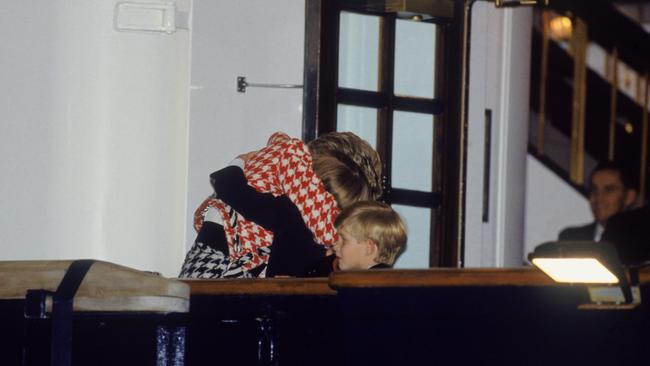
While the delight on Diana, William and Harry’s faces is abundantly clear, what got excised from the accepted narrative here was that Charles had followed his wife on board where he too hugged and kissed his sons while partially concealed by Diana.
The images immediately made news, including on the night time TV bulletins and solidified her images as one of idealised motherhood. More broadly, those shots are emblematic of Diana’s innate understanding of the potency of a carefully constructed - and tended public image - and that the qualities instilled in Charles, like regal restraint in public, played excruciatingly badly in the court of public opinion.
Time and again, she outwitted and outmanoeuvred him with a formidable dexterity and media savvy.
Christmas of 1991 would be the last time that the Princess of Wales would celebrate with the rest of the House of Windsor, with the couple formally separating in December 1992.
For William and Harry, now adult men with families of their own, this emotionally-fraught period in their parents’ lives is about to be resuscitated not only by The Crown but by the Kristen Stewart-led biopic, Spencer. It’s hard to imagine that seeing this ground raked over would be anything but painful for them.
In 1989, Diana was secretly recorded on the phone to alleged paramour James Gilbey in what became known as the Squidgygate tapes. “I’m going to go out and conquer the world, I’m going to leave him [Charles] behind,” she says on Gilbey.
The sad irony is that, three decades on from that moment on Britannia, she might have conquered the world legacy-wise but her story remains intimately and achingly tied to that of Charles.
Daniela Elser is a royal expert and a writer with more than 15 years experience working with a number of Australia’s leading media titles.
Originally published as Tragic story behind Princess Diana and Prince Charles yacht photos




